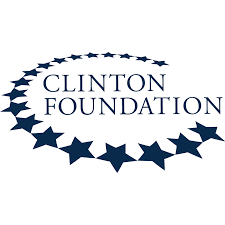 It has been called a crisis, scandal, controversy, and problem by journalists. If you are remotely plugged into the world around you, then you’ve probably heard or read something about Hillary Clinton’s decision to use a private server located in her private residence which stored tons of personal and governmental emails during the time she was Secretary of State. This news story is layered and smells as bad an onion, but there is a silver lining to this story, which is:
It has been called a crisis, scandal, controversy, and problem by journalists. If you are remotely plugged into the world around you, then you’ve probably heard or read something about Hillary Clinton’s decision to use a private server located in her private residence which stored tons of personal and governmental emails during the time she was Secretary of State. This news story is layered and smells as bad an onion, but there is a silver lining to this story, which is:
You and your non-profit organization can learn a valuable lesson from Hillary’s “situation”
I was in Hillary’s shoes (kinda)
It was April 1, 2006, and it was my last day as the executive director of my local Boys & Girls Club. I was packing up my office and trying to get out-of-the-way of the interim executive director, who the board had hired to keep the organization stable durning the executive search process and impending transition.
As I was taping up my last box, I realized that I had an email situation that needed to be dealt with.
Over my six years as executive director, I had:
- never deleted any of my sent or received emails
- blurred the lines between my personal and business email accounts
 None of this was malicious. It was always done out of a frantic sense of convenience and lack of time (or so I told myself).
None of this was malicious. It was always done out of a frantic sense of convenience and lack of time (or so I told myself).
So, I spent my final hours pouring over emails and deleting everything I didn’t consider a business-related correspondence. Ugh . . . and the things I found in those emails:
- There were all sorts of emails to my mother and sister pertaining to family gatherings
- There were emails to my then-partner and current spouse regarding social plans
- There were correspondence to people in my Rotary Club
Frankly, I was surprised at how many non-business related emails existed. None of it was inappropriate, but so much of it was garbage. In the moment, I had the following questions running through my head:
- Why wasn’t I more careful about segmenting my email by using my personal email account for personal things and my business account for business things?
- Why didn’t I clean out my email inbox every day?
- Who owned these emails? Am I allowed to delete all of these emails on my last day?
The reality is that my non-profit organization didn’t have any policies in place to help me answer these questions. Unlike Hillary Clinton, I didn’t have to deal with:
- government transparency issues balanced against state secrets and delicate diplomacy discussions
- executive orders and regulations from the President of the United States
- congressional legislation (e.g. Freedom of Information Act)
The silly thing is that we’re just talking about email, and the tech challenges to your non-profit organization are so much bigger.
Since my last day on the job at my local Boys & Girls Club in 2006, our technological world has only gotten more complicated. Right? It isn’t just email anymore. Now there are social media questions that government agencies, for-profit businesses and non-profit organization must grapple with.
So what lessons can be learned?
Establish clear policies on technology usage
 Most non-profit organizations are stretched too thin. I know, I know. But this is something you need to make time for because it is important.
Most non-profit organizations are stretched too thin. I know, I know. But this is something you need to make time for because it is important.
It is a great opportunity to engage technology volunteers in a meaningful project that can benefit and protect your organization. It is also an important project that can help manage your organization’s legal risks and public exposure.
The following are just a few questions your policies should address:
- What is appropriate vs. inappropriate content?
- Can employees use organizational email for personal communications?
- When is it appropriate for an employee delete email? What should be saved? How should all of this be archived?
- In a social media environment, what is inappropriate and what will the organization do if the employee is caught violating the policy? (e.g. should an employee be Facebook friends with clients or supervisors or board volunteers? what if an employee is vocalize a political view on a social media site that adversely impacts how donors view the organization?)
- Should every organizational email possess a “legal disclaimer” as part of the signature block?
- Is it OK for employees to create and store documents of a personal nature on your organization’s server?
The following are a few resources you might want to check out to help you with this project:
- Book by Nancy Flynn: “The ePolicy Handbook: Designing and Implementing Effective Email, Internet and Software Policies“
- Minnesota Council of Nonprofits: “Information Technology“
- EmailDisclaimers.com: “Email Disclaimers“
- OneOC Nonprofit Toolkit: “Technology Management“
- National Council of Nonprofits: “Document Retention Policies for Nonprofits“
- Next Mile Project: “Nonprofit Social Media Policy“
 Create separation and segment your life
Create separation and segment your life
I’m a member of the GenX generation, and separating my personal and work lives is difficult. Much has been written about my generation’s blurring of these boundaries, and I have to admit that I resemble those remarks.
But segmenting email communication shouldn’t be horribly difficult. Right?
When I think about my email situation, I have four different accounts (and many people have multiple email accounts):
- My sbcglobal.net account is what I use for eCommerce and junk. (this is the account I give companies because I know they are going to spam me)
- My gmail.com account is what I use for personal emails (this is the account I use with my friends and family and for all things non-business related)
- My heathynonprofit.com account is what I use for business communication (I try to limit to only communicate with my clients using this account)
- My acb-inc.com account is only used to communicate with capital campaign clients with whom I work as a subcontractor to American City Bureau to provide service
Do I goof up and accidentally blur the lines between these accounts? Of course! To err is human, right?
But that shouldn’t be an excuse not to try.
Moreover, you can now segment your email accounts on your smart phone. I have different buttons on my phone for each of my different email accounts.
I recognize this doesn’t come naturally to some people, but our changing world demands that we change our systems and practices or risk being left behind (or risk looking like Hillary Clinton does right now).
A side not about Hillary’s “crisis-scandal-controversy-situation-etc
 It hasn’t been talked about much, but the Hillary Clinton email story is a “Non-Profit Story“. Think about it for a minute.
It hasn’t been talked about much, but the Hillary Clinton email story is a “Non-Profit Story“. Think about it for a minute.
Hillary blended her emails. She likely had emails in her blended account pertaining to:
- State Department business
- Chelsea’s wedding
- Funeral arrangements for Hillary’s mother
- Personal stuff (e.g. yoga class)
- The Clinton Foundation and the Clinton Global Initiative
The Clinton Foundation is a non-profit organization.
In fact, The Clinton Foundation is a nonprofit organization that politicians and news media outlets continue to question about overseas donors and if/how those contributions influence family members who still operate in the public sector (e.g. Hillary’s time as Secretary of State and her alleged desire to be our next President).
This email story raises all sorts of non-profit questions including:
- What level of privacy should donors expect when electronically communicating with your organization?
- What legal impact can a donor’s email have on their charitable gift or pledge (e.g. restricted vs. unrestricted donations)
- If your non-profit organization accepts large quantities of government funding, are your records governed by transparency laws like the Freedom of Information Act?
Does your organization have an email policy? Tech policy? Social media policy? What resources did you find useful when developing these policies? Do you find enforcing these policies difficult? If so, how? Please scroll down and use the space below to share your thoughts and experiences. We can all learn from each other.
Here’s to your health!
Erik Anderson
Founder & President, The Healthy Non-Profit LLC
www.thehealthynonprofit.com
erik@thehealthynonprofit.com
http://twitter.com/#!/eanderson847
http://www.facebook.com/eanderson847
http://www.linkedin.com/in/erikanderson847

Eric, excellent comments, thank you! We are all guilty to some degree of the “blurring of the emails”! (Hmmm, sounds like a movie or a book title.) I agree that each of us needs to be more careful in our handling of these issues- myself certainly included! And as charitable entities, there is clearly a need to address this issue.
I do have a question for you, with tongue in cheek! As you probably would guess, I am not particularly a fan of Mrs. Clinton’s politics, but even I have to say you could possibly have found pictures that would have been a bit more flattering to her! I enjoyed the pictures as much as I appreciated your comments! (That is a poor attempt at humor by the way!)
Kelley . . . Unlike you, I am a fan of Mrs. Clinton (some policy issues withstanding), but I have learned from many years of blogging that nice pictures, milk toast content, and mediocre headlines get ignored. A little bit of edge (ala Noel Tichy) will drive traffic and build readership. In fact, there is another non-profit lesson in this . . . NFPs need to be strategically and carefully edgy with their donor communications to CUT THRU THE NOISE.
As always, it is great to hear from you Kelley. Good luck reconciling your issues with Mrs. Clinton. 🙂
Great tips, Erik! Thanks for sharing and all the good research.
Aw shucks … thanks Joanne! Coming from an online blogger of your experience and stature means a lot. Thank you. 🙂
Eric, I submit humbly to your wisdom. Nicely done! LOL
Here is my blurring the lines story. I am a “supporting member” of a national NFP by virtue of a modest donation. I am personally acquainted with one Director who lives in my state who serves, also, as a Director of an affiliated organization. He recently sent me an email asking for some info to help some friends with some problem solving. I provided the phone numbers of two relevant orgs and answered questions so he would have info to pass along to his friends for their problem solving. I thought this would be the end of the story.
He asked a follow-up question for more specific contact info about a particular person at one of the orgs, because she had joined the org of which i am a “supporting member” and he wanted to express a welcome and to be in touch. From my perspective, I would have felt as though I were circumventing the by-laws and authority of the org by providing more specific contact info – wouldn’t the org have its own policies and procedures for the who/how/when of “welcome” communications?
The director then asked the contract membership processor of the national org for the contact info I would not provide, but instead of making a new request to them, leaving me out of it, he cc’d the contract staff on what had started as a personal email communication to me, without asking my permission to share our personal communication with the national org, making what I had engaged in as a personal email question/response into the business of the national org. He was transparent with the national org that he was asking for the contact info of a member so he could give it to a friend for their problem solving purposes.
Apparently the national org provided the member’s contact info for this Director’s well-intentioned personal purpose.
Whoa Nellie is what I thought, and was transparent about planning a letter to the national org Secretary to request clarification on their policies/procedures for divulging the contact info of members, and on guidance, if any, they give directors about separating personal communications and interests from the communications and interests of the nonprofit.
Instead of this being the end of story, the Director cc’d the whole thread to the President of the local affliliate, making what I had engaged in as a personal email correspondence into the business, of a second entity. I sent the same two questions to that entity’s Secretary – the policies about divulging member contact info, and guidance, if any, given to Directors about separating personal communications from communications done on behalf of the organization.
The President of that entity wrote me a two line email telling me to be reasonable and that I was wasting a lot of people’s time. I sent a reply that I had not made this the business of either the National or Local organization! That was done by a Director who, instead of making an info request to their membership records, leaving me out of it, started adding cc’s of the national and local org to what he had started as a personal email question to me.
Hey – I’m not the one with a nonprofit status to protect; I’ve simply learned how low the bar is set for these org’s “due diligence” to separate the business of the NFP from Directors’ personal interests…. so low that my questions on the subject were met with a “you are wasting a lot of people’s time” response from the President of one of the orgs.
Thanks for reading this rant about my unwelcome and uninvited “blurring the lines” experience initiated by a NFP Director.
WOW! You’re thoughts are comprehensive and I’m sure readers will need time to process your experience. However, I walk away from your explanation more firmly believing that it is always better to pick-up the phone than to type it out in an email if you have something to share that you don’t want shared with the world. Email has certainly changed our world and our norms.